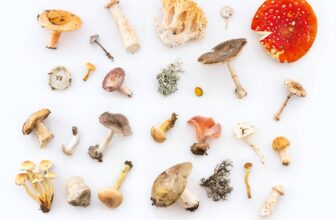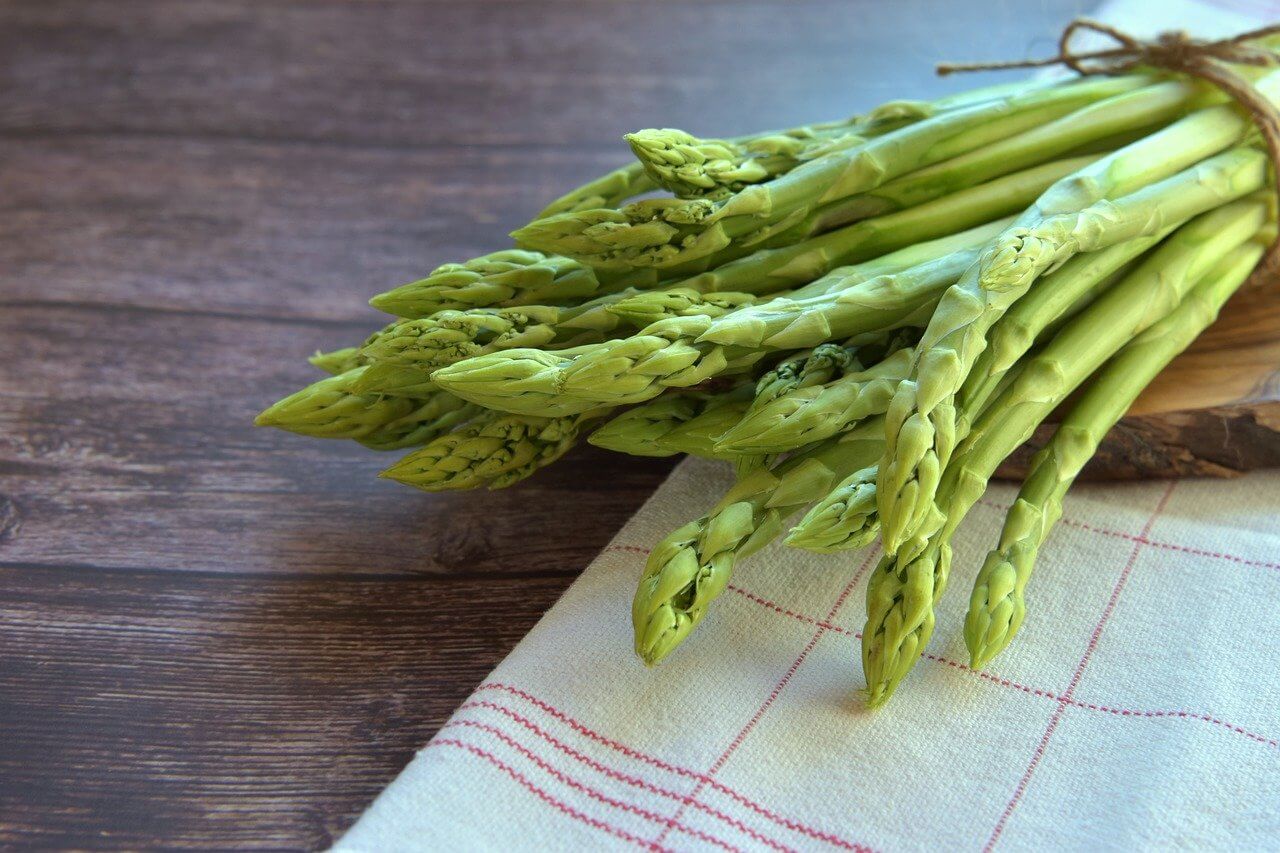
Table of Content
Asparagus is an extensively popular vegetable, used for its flavor and nutritional benefits. It’s usually considered a luxury vegetable due to the number of years it takes to grow and its short seasons. Despite its luxury status, asparagus is one of the most productive plants to grow.
In this article, we’ve covered everything you need to know about how to grow and care for asparagus and its many benefits.
About Asparagus
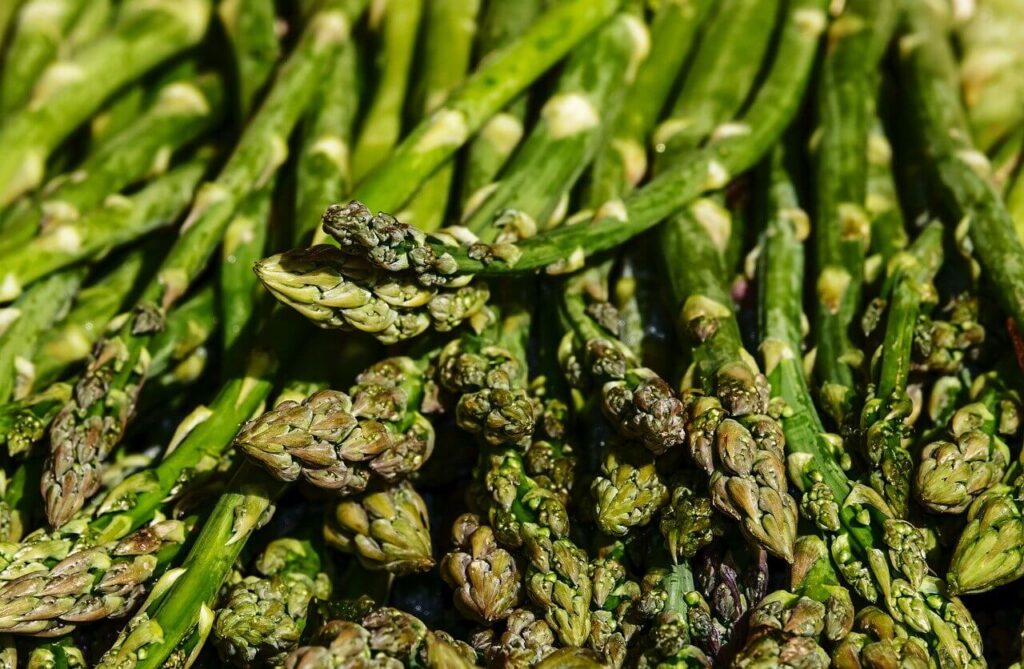
Asparagus is found in several countries around the world including China, Thailand, Mexico, Peru, and Germany. There are various colors of asparagus, but the three most popular and commonly found are green, purple, and white. Purple asparagus has a slightly sweeter flavor than the green, whereas the flavor of white asparagus is much stronger.
Asparagus is usually picked when its only a young shoot. This is when it looks similar to a spear rising above the soil. If you don’t pick your asparagus at this size, it will continue growing into massive fern-like trees. The spear is edible, from the top to the woody stem at the bottom which is too hard to eat and the seeds as well as the roots are used to make certain alcoholic beverages such as the asparagus martini.
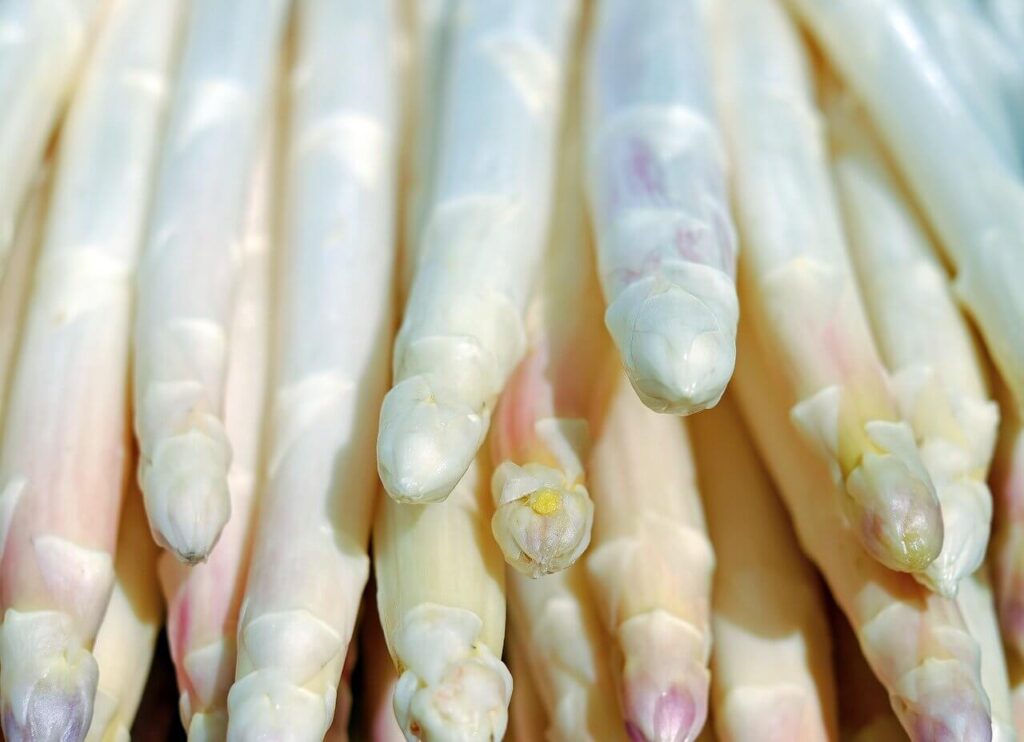
This vegetable is also extremely popular around the world due to its health benefits. It’s high in antioxidants such as glutathione, vitamin C. It contains low levels of the amino acid asparagine which helps remove carcinogens and excess salts while reducing the blood pressure of your body. Asparagus is also used to treat various ailments such as urinary tract infections and joint pains. It can be used to treat constipation and is also known to prevent kidney stones and anemia.
Factors to Consider
Growing asparagus has its benefits but on the downside, it’s not a vegetable that can be harvested quickly. It could take around 2-3 years to actually see its first produce. However, once it begins to grow, it will continue produce for as often as every few days a week during the spring and summer for up to 20 years! After all it’s a luxury vegetable with a fair price on the market, so it’s definitely worth the wait.
If you’re planning to grow your very own asparagus, there are a few important factors to consider before you start. Let’s take a look at what these are.
Sunlight
Asparagus is a sun lover so choose an area in your garden that receives full sun exposure. It requires at least 8-10 hours of sun per day. If your asparagus doesn’t have enough sunlight, it will grow higher and higher in search of more sunlight.
As a result, the plant would eventually fall or droop. Considering that asparagus is a long-lived perennial, avoid planting it in shady areas or next to other trees and shrubs that would compete with it for nutrients and water.
Soil
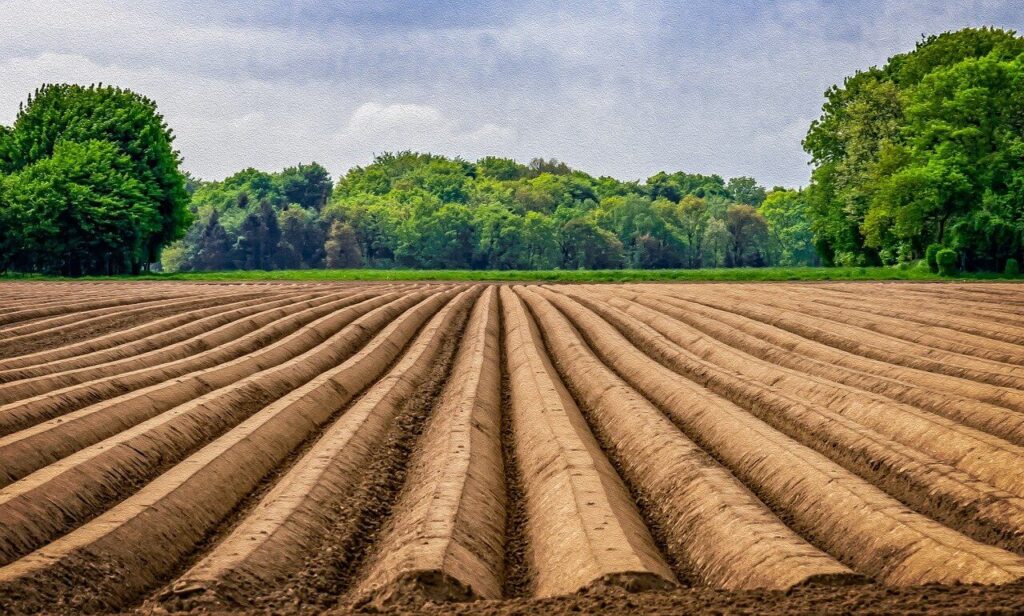
Asparagus thrives in soil that’s loose, well drained, and fertile, but it can also grow in heavier soil. Since the roots and crown and the root system can grow from 5 to 6 feet in diameter and 10 to 15 foot in depth, you will need to plant them in rows at least 4 feet away from each other. If your soil isn’t as fertile as you’d like, you can mix it with compost before you plant.
Pests and Diseases
There are several types of pests that can attack asparagus plants including asparagus aphids, asparagus beetles, caterpillars, and slugs. Of these, the asparagus beetle is the most dangerous. If not taken care of immediately, these pests can kill your plants so it’s important to keep an eye on your plants and deal with these pests before they get out of hand.
In order to control asparagus beetles, remove all the dead ferns and crop the debris by the end of fall so that these beetles won’t be able to grow. If this doesn’t help, you could always try using a pesticide or handpick the bugs.
Asparagus plants are prone to diseases such asparagus rust and fusarium crown which could degenerate the productivity of the plants over time. The best way of preventing the spread of these diseases is by removing the ferns.
Watering
Asparagus requires frequent watering, especially the younger plants that need to be given at least 1-2 inches of water per week. As they grow older, the plants would need less water, about 1 inch per week. You can also use a drip irrigation or soaker hose to ensure that your plants are properly watered.
Temperature and Humidity
Asparagus grows best at a temperature of 70 to 85 degrees Fahrenheit (21°C-29°C) during the day and 60 to 70 degrees Fahrenheit (15°C -21°C) at night. Shoots begin to emerge once the soil reaches a temperature of 50 degrees Farenheit (10°C). Any other temperatures above 85°F (29.4°C) or below 55 °F(12.8°C), can reduce the growth rate of asparagus.
Fertilizer
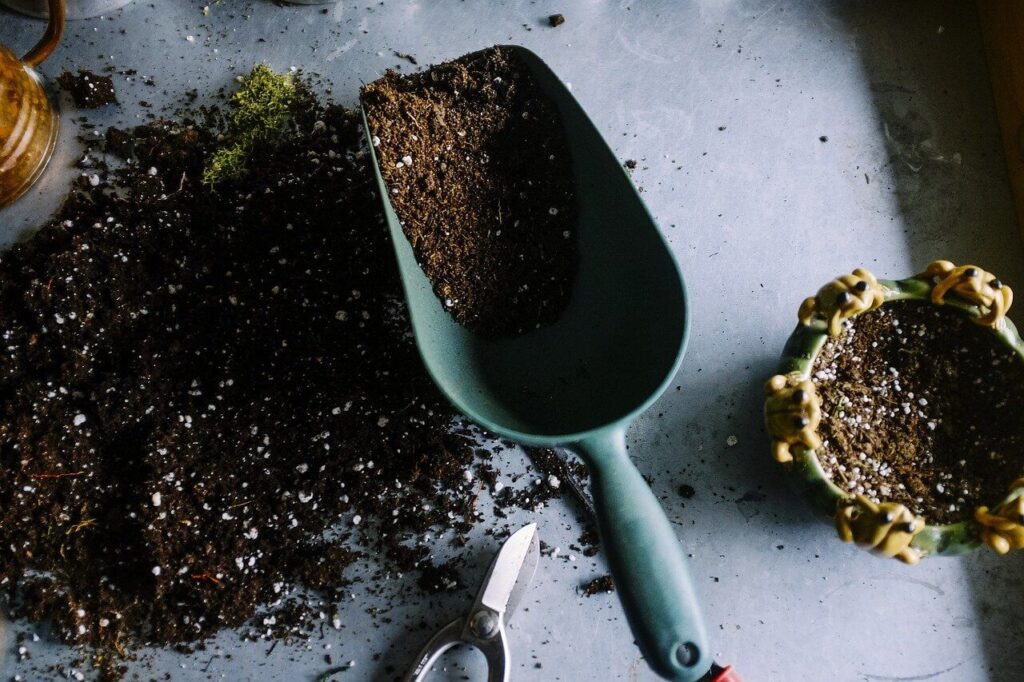
Asparagus plants are heavy feeders and they require a lot of fertilizer. You can use an all-purpose fertilizer or nitrogen fertilizer for your asparagus plants, adding 2.5 pounds of 10-10-10 fertilizer per 100 square feet.
Compost is also an excellent fertilizer for asparagus and you can also try compost tea. Mulching will also help keep your asparagus healthy. Here are several different types of mulch you can use for your asparagus plants.
How to Grow Asparagus
Follow these steps to plant your asparagus the right way:
Growing Asparagus from Seeds
- First, soak your asparagus seeds in water for up to 2 days.
- Choose a sunny area in your garden with well-drained soil with a pH value of 6.5 to 7.5. Add large amounts of compost to the soil to make it rich. Use mulch to improve the state of the soil.
- Sow the seeds 1 inch deep and about 5 inches apart from each other. Each row should be at least 18 to 24 inches apart.
- When the seedlings grow to about 3 inches in height, thin them to 6 inches apart.
- If you’re growing your indoors temporarily, you can set them outdoors when they’re about 12 to 14 weeks old.
Growing Asparagus from Crowns
- Plant the crowns around 18′ intervals in the well-prepared garden bed.
- Add in a shovel of compost, a cup of all-purpose organic fertilizer, and rock phosphate to promote strong roots.
- Ensure that the top of the crown is at least 2 inches below the soil surface.
- The roots need to be covered with garden soil up to the crown and watered well.
- Add more soil to fill the trench as the shoot starts to emerge.
- If your site gets overcrowded then dividing or transplanting the plants could be a healthy option for its growth.
- To move or transplant asparagus, dig and lift the crown with a garden fork without disturbing the roots. Next, divide the clumps into two or more pieces. Water them carefully.
Male and Female Asparagus
Asparagus is a dioecious plant which means that there are male and female plants. There are slight differences between the two which make them easily identifiable. Female asparagus plants have seeds similar to small, red berries and their blooms are small. Male asparagus produce larger, thicker spears than the female plants and their flowers are also a lot bigger.
Male asparagus plants are highly favored because they produce larger yields than female plants. If you want, you can always remove the female plants from your crop and replace them with male plants for a better yield.
Harvesting
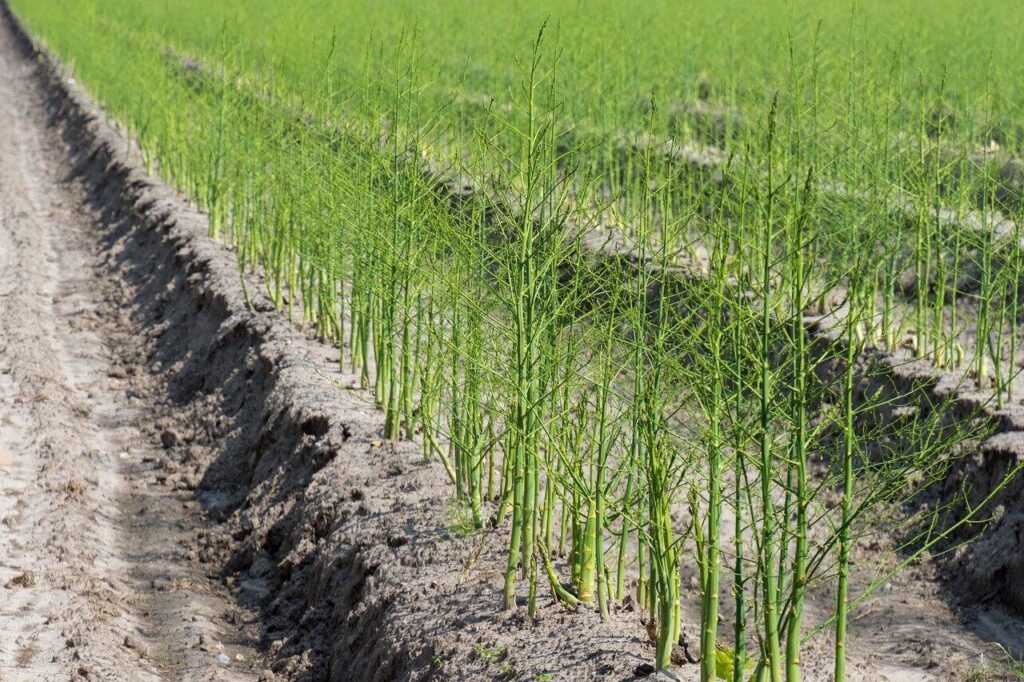
You know your asparagus is ready to harvest when the spears are about 5 to 7 inches high. The best time to harvest is after the third year of growth because this will give the plants enough time to mature properly. Harvest for two weeks and then harvest again for another three weeks in the fourth year. In the fifth year, you can harvest for about four to six weeks.
Remember: don’t harvest too much of your asparagus because this will weaken the root system.
After about a month of harvesting, the shoots will start to get spindly as the weather gets warm. At this stage, leave the plants to grow into their fern-like structures, so they get stronger and the roots would be well-fed. If the planting site gets overcrowded, divide your plants or transplant some of them to improve their growth.
When harvesting spears, cut them or snap them off above the soil level. After the bed is established, continue to harvest until the produce is skinny spears which are less than half an inch in diameter. Spears will develop naturally to a height of 4 to 6 feet once the harvesting season is over.
The asparagus fronts will start to turn yellow as fall arrives. Remember to cut these off at an inch above the ground and remove them to help prevent overwintering and beetles from nesting in the plants.
The Take-Away
Asparagus is a delicious, flavorful vegetable that’s well worth the effort made to grow it. However, if you want to plant a vegetable that can be harvested quickly, this is most probably not the right vegetable for you. When it comes to growing and caring for asparagus, remember: patience is key!




